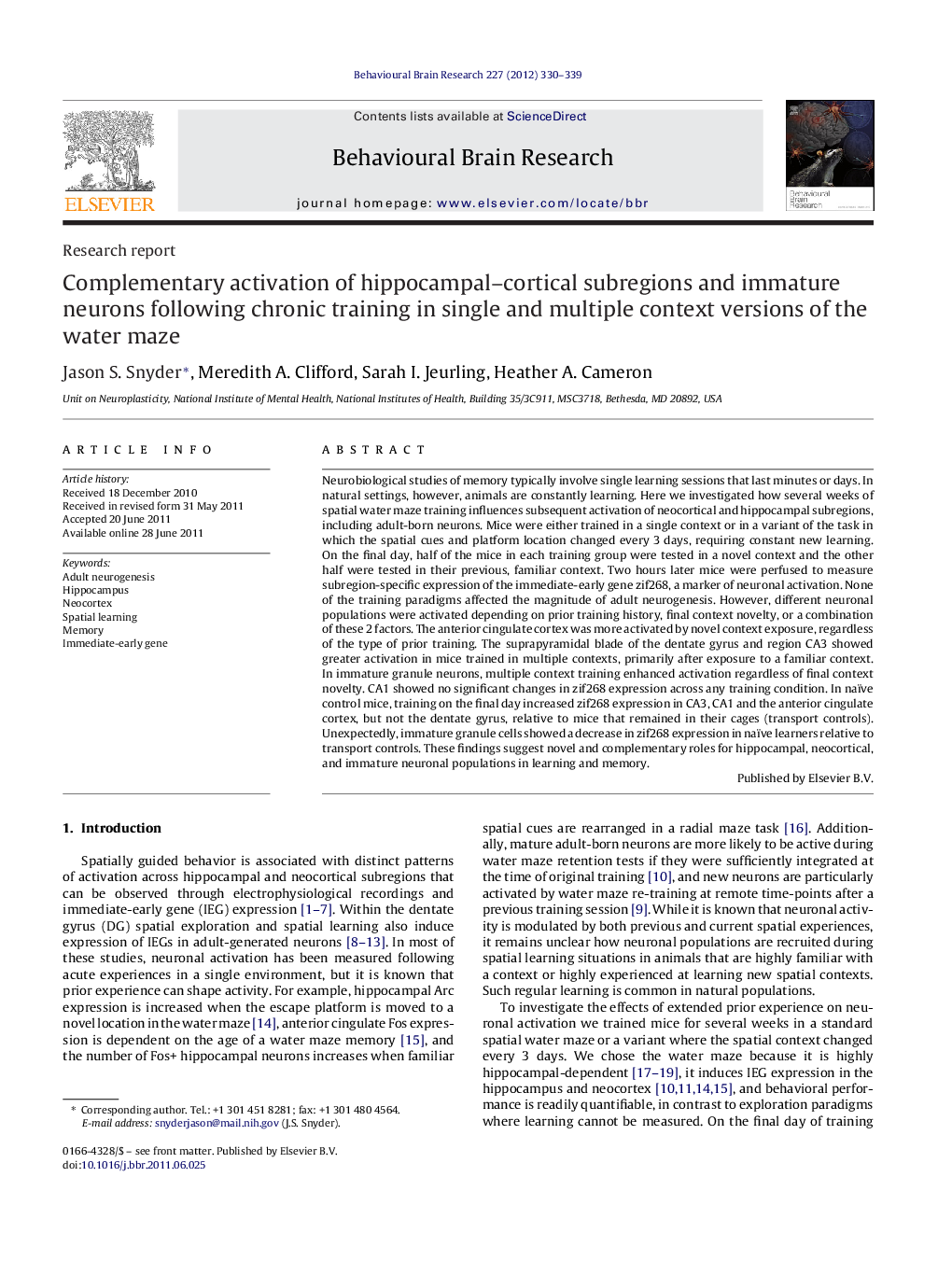| Article ID | Journal | Published Year | Pages | File Type |
|---|---|---|---|---|
| 4313228 | Behavioural Brain Research | 2012 | 10 Pages |
Neurobiological studies of memory typically involve single learning sessions that last minutes or days. In natural settings, however, animals are constantly learning. Here we investigated how several weeks of spatial water maze training influences subsequent activation of neocortical and hippocampal subregions, including adult-born neurons. Mice were either trained in a single context or in a variant of the task in which the spatial cues and platform location changed every 3 days, requiring constant new learning. On the final day, half of the mice in each training group were tested in a novel context and the other half were tested in their previous, familiar context. Two hours later mice were perfused to measure subregion-specific expression of the immediate-early gene zif268, a marker of neuronal activation. None of the training paradigms affected the magnitude of adult neurogenesis. However, different neuronal populations were activated depending on prior training history, final context novelty, or a combination of these 2 factors. The anterior cingulate cortex was more activated by novel context exposure, regardless of the type of prior training. The suprapyramidal blade of the dentate gyrus and region CA3 showed greater activation in mice trained in multiple contexts, primarily after exposure to a familiar context. In immature granule neurons, multiple context training enhanced activation regardless of final context novelty. CA1 showed no significant changes in zif268 expression across any training condition. In naïve control mice, training on the final day increased zif268 expression in CA3, CA1 and the anterior cingulate cortex, but not the dentate gyrus, relative to mice that remained in their cages (transport controls). Unexpectedly, immature granule cells showed a decrease in zif268 expression in naïve learners relative to transport controls. These findings suggest novel and complementary roles for hippocampal, neocortical, and immature neuronal populations in learning and memory.
• Prior training, but not novelty, increased activation of new hippocampal neurons. • Novel final context, but not prior training, increased activity in anterior cingulate. • Familiar context, after prior training, activated dentate gyrus-CA3 neurons. • Distinct neuronal populations respond to prior and current experience.
